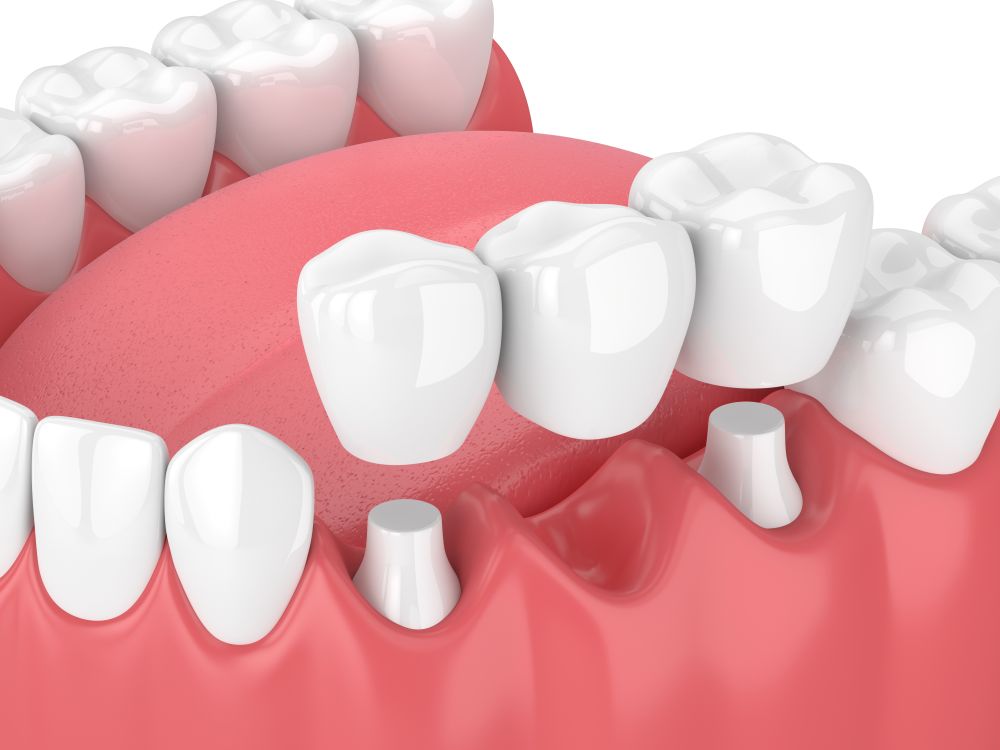Missing teeth can cause a variety of problems, from difficulties chewing to speaking properly to tooth drift. Dental bridges are durable, natural-looking prosthetics that can replace one or more missing teeth. They anchor to two nearby healthy teeth and unlike dentures can only be removed by your dentist. Though they will eventually need to be replaced, with excellent care and proper use, your dental bridge could last for over a decade.
Here’s what you need to know about dental bridges, and how you can keep your new bridge functioning for years to come!
What is a Dental Bridge?
Dental bridges are a series of prosthetic teeth that are cemented into place over a gap in your arch. They are secured onto two healthy anchor or abutment teeth on either side of the empty space. Best of all, because they look and feel like natural teeth, nobody will ever need to know they’re prosthetics!
What are Dental Bridges Made of?
In most cases, dental bridges are made of the same highly durable, natural-looking porcelain material used in dental restorations such as dental crowns.
There are two different types of dental bridges: regular bridges and dental implant bridges. Neither type can be removed by the patient, but unlike regular bridges, dental implant bridges can last a lifetime. That’s because instead of using teeth to anchor them in place, dental implant bridges are attached to your jawbone with permanent implants. While you probably won’t need to replace the posts themselves, you may eventually need to replace the teeth, but with proper care and use they could still last 20 or more years.
How Can I Ensure My Bridge Lasts as Long as Possible?
With excellent oral hygiene, a regular dental bridge can last up to 15 years or more. To keep it in good condition, follow these tips:
- Brush your teeth twice a day with a soft-bristled toothbrush and non-abrasive toothpaste.
- Though you cannot floss between the teeth of your dental bridge, it is still important that you floss the rest of your teeth, including between the anchor teeth and your natural teeth.
- Never use your bridge to crunch anything excessively hard like ice cubes or hard candies.
- Never use your bridge to chew anything but food; no opening packaging, biting fingernails, or chewing on pen caps.
- Visit your dentist twice a year for your preventive exams and cleanings.
- Contact your dentist if you feel any pain or sensitivity around your bridge, or if your bridge gets damaged.
Remember, dental bridges are an excellent way to replace several consecutive missing permanent teeth. To learn more about these versatile prosthetics and see if you’re a good candidate for treatment, speak to your dentist about your options today
Remember, dental bridges are a natural looking, durable, and functional way to replace missing permanent teeth. To learn more about whether this treatment can help your smile, speak to your dentist today!
About Dr. Antoon
Dr. Sam Antoon earned his Bachelor of Science in Microbiology and his dental doctorate at Southern Illinois University’s School of Dental Medicine. He has been in private practice for over two decades and is currently a member of the American Dental Association, Texas Dental Association, and Fourth District Dental Society. If you’re looking to replace one or more consecutive teeth and are interested in learning more about dental bridges, please schedule a consultation with Dr. Antoon by visiting our website or call us today at 972-640-6229.

